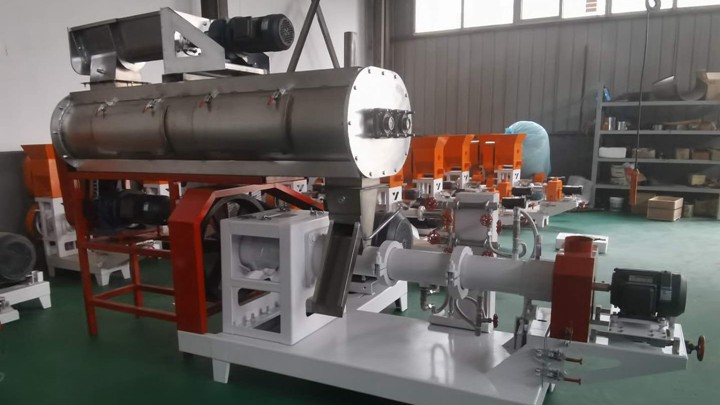.jpg)
Robert L. Zimdahl, in Agriculture's Ethical Horizon (Third Edition), 2022 3 Efficiency. Cattle production has become more efficient because improving productivity per animal has reduced the environmental effects of each animal and of the cattle industry. About 80% of the cattle produce the same amount of beef in fewer days, produce less CH 4, NO x, and …
.jpg)
2023-1-30·The cattle feed production process and machinery are introduced in detail from the point of view of meeting the technical requirements of pellet feed. Home; about us; products; industry; ... Company Anyang Best Complete Machinery Engineering Co., Ltd - Tel: 0086-372-5965148 - Fax: 0086-372-5951936 ...
.jpg)
The workshop covers a variety of topics, such as identifying animals that can efficiently convert feed into marketable products. Beef Cattle Nutrient Requirements. Matching forage quality and quantity to the cattle nutritional needs is a key factor for optimal herd performance. Underfeeding nutrients can lower production and overfeeding can ...
.jpg)
2023-1-14·The production process of cattle feed pellets is completed by a combination of machinery and process technology. Only by improving the level of production technology, product quality and equipment utilization, and ensuring feed quality, can cattle production performance be maximized, so that the investment of a factory can also achieve the best ...
.jpg)
2021-2-17·Annual demand for coarse grains for animal feed is also projected to increase over the period by 553 million tonnes, corresponding to approximately half of the total increase in demand (FAO, 2009). To meet the future demand, production of milk and meat, including milk production per lactating cow and daily weight gains for meat animals
.jpg)
Based on performance of feedlot cattle, steam flaking increases the value of corn by 18%, considerably more than is suggested by tabular values. ... is the first limiting step toward optimizing starch digestion. Five critical production factors influence the quality of steam-flaked corn: steam chest temperature, steaming time, roll corrugation ...
.jpg)
2021-11-8·It will focus on supporting the development of the manufacturing industry with industry chain partners to help customers achieve higher and faster value growth. Project Name: Commercial Animal Compound Feed Processing Plant Project with an annual output of 36,000 tons(120 tons per day, 15 tons per hour). Project location: Shandong …
.jpg)
Cattle Feed For milk Production. Usually, cattle feed that is produced from milk unions has all the essential nutrients for maintaining the body of cattle and the production of milk. Cattle feed is prepared with high-quality grains, minerals, common salt, oil cakes, vitamins etc. It is cheap in cost and highly digestible to the animals.
.jpg)
2023-1-14·The production process of cattle feed pellets is completed by a combination of machinery and process technology. Only by improving the level of production technology, product quality and equipment utilization, and ensuring feed quality, can cattle production performance be maximized, so that the investment of a factory can also achieve the best ...
.jpg)
2017-9-18·Compound feed production is a complicated operation that requires processing of a heterogeneous mixture of several ingredients into uniform pellets. Feed mills are now facing important challenges. These include ensuring profitability and safety of milling operations. There are wide variations in prices and often in supply of feed raw materials.
.jpg)
2020-1-3·Step 03: Feed Mixing Process Mixing is one of the necessary steps in animal feed production line. Proper mixing will increase material uniformity and improve feed quality. Step 04: Animal Feed Pelleting Process Feed pelletizing machine is the key equipment for feed making. Feed granulation machine is a ring mold design, widely used …
.jpg)
Feed fermentation is a complex process that integrates knowledge from nutrition, physiology, immunology, microbiology, biochemistry, industry design, ecology, economy, and bioinformatics. The use of techniques for feed fermentation depends on the nutritional requirements and digestive physiology of animals, the nutritive value of feedstuffs ...

2021-4-16·Design 1: Animal Feed Manufacturing Process. Raw materials reception → cleaning and removal of impurities → crushing → batching → mixing → pelleting → sieving & cooling → feed pellets packaging. This includes a series of steps like removal of impurities and cleaning, crushing, batching, mixing, pelletizing and sieving and cooling.
.jpg)
2017-6-8·1) Grain Supplement. Grain can get cattle growing quickly and can help cattle get fat. In fact, many farmers feed grains to growing cattle to reduce costs and get cattle ready sooner. Grain supplements are also a good solution for winters and for cattle that lack access to high-quality hay and grazing pastures.
.jpg)
If average moisture of finish good is 10.5 %, considering the statement ….a, average moisture loss or shrinkage will be 12.125 – 10.5 = 1.625 %. For a feed mill manufacturing 200 MT a day, calculation of 1.625 % @ average price of 24 Rs/kg - whole batch; daily loss = 78,000 Rs. Apart from this monetary loss there is fluctuation in ...